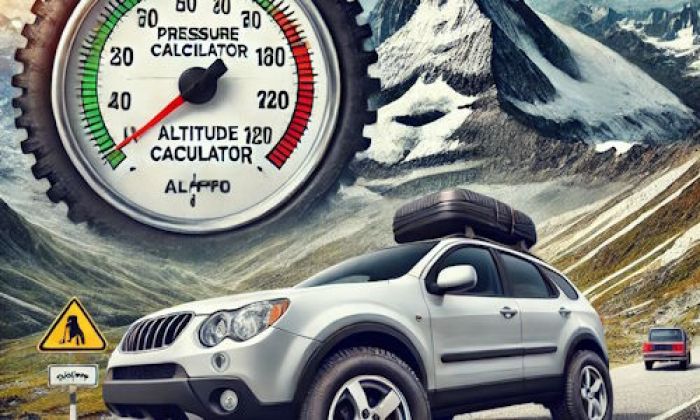Driving a car is a routine activity for many people across the world. But as you try to leave your garage one day, you run into an issue. Even though you move into the reverse position, your car simply won't back out. No matter how many times you restart it, it simply won't budge, leaving you stuck in your garage.
Transmission no-shift problem highlights
- Level of importance:High
- Reasons:Control module failure, low fluid,badfluid, mechanical issues
- Needed expertise:High
- Needed tools:Professional tools set
- Time taken:5-10 hours
- Can you drive? Yes, if some gears engage
- Possible issues: Fatal transmission damage, car stationary.

My car won't go in reverse - a serious issue or not?
A car that won't go in reverse can be a serious issue. This problem usually happens because of a faulty transmission. And while that doesn't affect your engine in any way, you should address it as soon as possible.
Imagine you park your car at a shopping mall. If your car won't go in reverse, you'll have no way of leaving the shopping mall without a towing service. This can leave you stranded somewhere for hours, leading to even more problems. Not to mention it's not cheap either.
But parking won't be your only problem. A car that won't go in reverse is dangerous to drive, especially in heavy traffic. What if there is an accident and you can't go in reverse to maneuver out of it? You won't be able to do this with a failing transmission.
If your transmission won't shift to reverse, examine the issue immediately. Even if it happened just once, it's better to be safe than sorry - you have no guarantee it won't happen again.
What happens when your car won't go in reverse?
Before we examine the possible causes behind a car that won't go in reverse, let's look at what the issue is.
When this happens to you, your car will drive just fine as long as you're moving forward. The issues start only once you engage the reverse gear. If you're having trouble with all gears, then your entire transmission may be broken.
There are two types of faulty reverse gear. The first one affects the gear itself. When this happens, you won't be able to move the shifter into the R position at all. This suggests low transmission fluid levels or a mechanical failure.
Sometimes, you may be able to move the shifter into the reverse gear just fine. But even if you do, your car just won't go backward. This suggests issues that run deeper inside your vehicle, such as a faulty sensor or valve body.
The reasons why your car won't go in reverse and how to fix the issue - including DIY options
Now that you understand what a car that won't go in reverse looks like, it's time to look at what caused the issue in the first place. Most of the causes have something to do with the transmission itself. Some are easy to fix while others will require professional assistance.
Some causes depend on whether you have a manual or an automatic transmission. We mark each possible cause accordingly to make the troubleshooting a bit easier for you.
Here are the 6 common reasons why your car won't go in reverse:
1) Low Transmission Fluid (Both)
The first reason why your car won't go in reverse could be low transmission fluid levels. The transmission fluid acts as a lubricant, soaking up the heat and friction generated by the metallic components. It's extremely important since minimal differences from the recommended levels will lead to shifting issues.
Your transmission fluid should always reach up to the dipstick. If it's even slightly lower, you should replenish it as soon as possible.
However, we recommend doing more than just refilling the transmission fluid. Over time, dirt and other impurities will build up, leading to transmission issues. Flushing and replacing the transmission fluid will lead to much better results.
Of course, low transmission fluid affects all gears. If your entire transmission acts up, it may be worth checking your fluid levels. But if it's just the reverse, consider checking out other possible causes.
Solution:
Replenishing the transmission fluid should do the trick here. For best results, we recommend replacing it completely. Just make sure you follow your manufacturer's manual and choose the right type of fluid. You should check on your transmission fluid levels at least once a month to prevent this issue from happening in the first place.
2) Broken Position Sensor (Automatic)
One of the most common reasons why your car won't shift into reverse is a broken position sensor. This device acts as a bridge between your shifter and the powertrain control module. It informs the PCM about the current position, allowing it to shift the gears accordingly. If it's faulty, your vehicle may not register the R position.
Sometimes, this can affect other gears as well. Your car may go into limp mode, meaning you won't be able to move past the 3rd gear.
Solution:
Unfortunately, there is no DIY option for this issue. The sensor is rooted deep inside your vehicle and you need a professional mechanic to reach and replace it.
3) Faulty Valve Body (Automatic)
The valve body is a component of automatic transmissions. It controls the flow of the transmission fluid, allowing your vehicle to change gears smoothly.
The good news is that this component doesn't fail that often. But when it does, you'll experience several issues with your car. Apart from having issues with going in reverse, you may also experience slipping gears. Erratic shifting and locked gears are also fairly common symptoms of a failing valve body.
Solution:
Much like with the broken position sensor, this isn't a problem you can fix alone. If your valve body malfunctions, your best bet will be to replace it with the help of a professional mechanic.
4) Damaged Gears (Both)
Damaged gears can affect the performance of both types of transmission. It usually happens when your vehicle's old. However, it can sometimes be a design flaw. Each transmission position has its own gears. If the one responsible for shifting in reverse becomes damaged, you won't be able to go backward.
If you have a manual transmission, this can sometimes happen when you use the shifter too roughly.
Solution:
Since the gears are deep inside your vehicle, you won't be able to replace them on your own. If you suspect this is the issue, consider visiting a local auto shop.
5) Malfunctioning Shifter Mechanism (Manual)
This issue affects only manual transmission. When this happens, you'll have a hard time moving your shifter into the reverse position. This is because of faulty shifter wiring. A broken cable means you won't be able to shift gears as smoothly as you're used to. In the worst-case scenario, you won't be able to go into the R position at all.
Solution:
Have a mechanic inspect your shifter. Solving this issue requires mechanical knowledge and you likely won't be able to handle it on your own.
6) Broken Lockout Ring (Manual)
A lockout ring is an essential component of every manual transmission. It prevents you from moving your shifter from a forward gear directly to the reverse gear. If this happened, your transmission would be severely damaged.
If the lockout ring goes bad, it may become too sensitive. As a result, it can prevent you from shifting in reverse even when it shouldn't.
Solution:
Since this is another transmission issue that requires intense mechanical knowledge, you won't be able to solve it on your own. We recommend getting professional assistance instead of tampering with your vehicle components.
Our final thoughts on a car that won't go in reverse
A car that won't go in reverse can be a serious nuisance. Since you need to engage the reverse gear whenever you park your car, any issues with your transmission may leave you stuck in a parking lot. Even worse, you may have a harder time navigating out of obstacles found on a road.
If your car won't go in reverse, it means your transmission is malfunctioning. It can happen to both manual and automatic models. Whether you can fix the issue on your own depends on what caused it in the first place.
Before you jump into troubleshooting, you should first examine your transmission fluid levels. If they drop too low, your transmission will start acting up even if other components work fine. You should check the levels monthly to prevent the issue from happening in the first place. If your transmission fluid keeps dropping faster than usual, your car may leak in the transmission system. If so, you'll need help from a professional mechanic.
Your transmission fluid might also be contaminated. In that case, we recommend flushing it completely and refilling it with a new one.
Other reasons why your car won't go in reverse have to do with failing mechanical parts. Unfortunately, this means you won't be able to fix them on your own.
About the authors
The CarAraC research team is composed of seasoned auto mechanics and automotive industry professionals, including individuals with advanced degrees and certifications in their field. Our team members boast prestigious credentials, reflecting their extensive knowledge and skills. These qualifications include: IMI: Institute of the Motor Industry, ASE-Certified Master Automobile Technicians; Coventry University, Graduate of MA in Automotive Journalism; Politecnico di Torino, Italy, MS Automotive Engineering; Ss. Cyril and Methodius University in Skopje, Mechanical University in Skopje; TOC Automotive College; DHA Suffa University, Department of Mechanical Engineering






Add comment